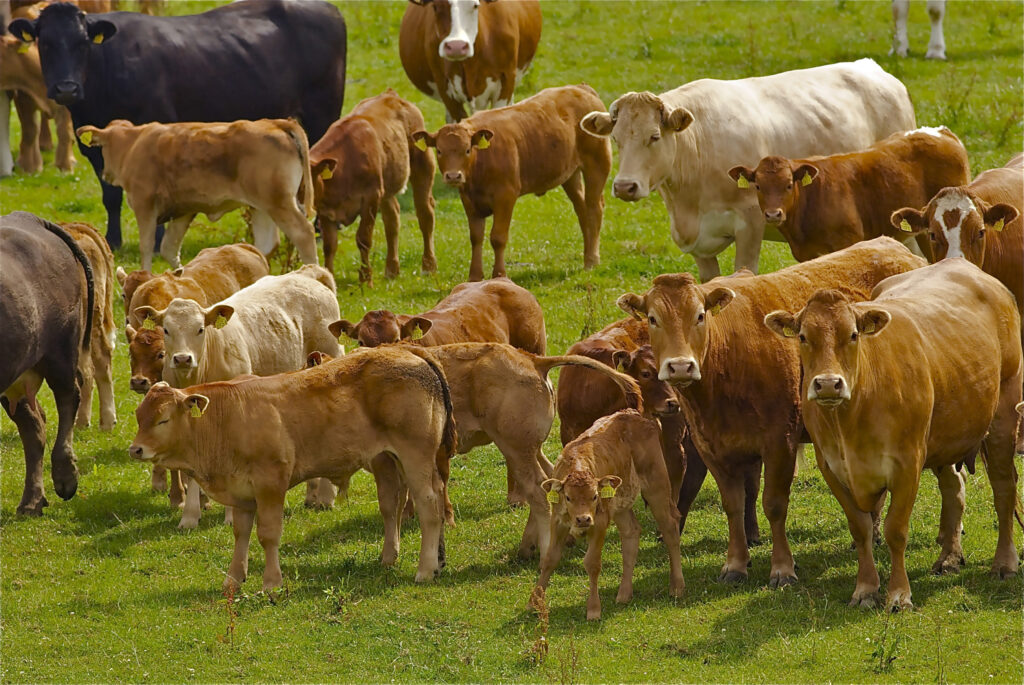As the last deadline for the first tranche of the ‘Beef Data Genomics Programme’ (BDGP) has passed on Saturday (October 31), participants are in a situation where they are left wondering as to what is the next step.
As the deadline approached for participants having at least 50% of their herd’s reference number of females genotyped 4 or 5-stars by October 31, it was always highlighted that a large number of herds were failing to meet this requirement.
However, in recent weeks more farmers were beginning to meet the requirement by purchasing eligible females and by moving away from the threat of having a 140% penalty on payments imposed.
Chris stated: “As of Monday [October 26], there were 1,280 herds still falling short of meeting the requirement and that figure had seen a reduction of 200 herds from the previous week, so it is reducing fairly rapidly as farmers are going out and buying the females they need.
“I’d be very confident that between farmers going out and buying in animals and including the last genetic evaluation run [held on November 24], that it will get us under a figure of 1,000 herds [that failed to meet the requirement].”
Examining the success of BDGP 1
There have been many elements for participants of BDGP 1 to undertake and apply to their herds – such as genotype testing their animals and being encouraged to use 4 or 5-star rated sires on their herd. But how has this aided either the farmer or the ICBF as we look forward to the future of suckler farming?
“From an ICBF point of view, we now have almost two million animals genotyped during the course of the program. Then in terms of data recording, there is more docility data and cow milk data, which would have been an area where we were struggling before,” Chris explained.
“Through BDGP and the Beef Environmental Efficiency Pilot (BEEP), we have cow milking ability scores and the weighing data which is going to see a lot more reliability around milk figures in suckler cows.”
In the table (above), we can see that herds participating in the scheme are recording a calving interval of nine days less, when compared to non-BDGP herds. Age at first calving is also younger within BDGP herds, as they are achieving an average age of 30.3 months old.
“From the farmers point of view, figures such as calving interval are coming down and calves per cow per year is on the increase. When we look at the 22,500 herds in BDGP 1 and compare their performance to herds not in BDGP, there are big differences.
“It is really over the next few years that the benefits of this improved breeding will be seen in the performance of these younger cows [that have been bred from high Replacement Index bulls during the scheme].”
Comparing these herds again in terms of growth in numbers, Chris noted:
On average, herds in BDGP 1 have increased by at least one cow. Overall, we see the national suckler herd shrinking, but it is more so in herds that are not in the scheme.
“A lot of the non-compliance herds in the scheme are more so herds that have either gotten out of suckler cows or are significantly winding down and reducing numbers.”
Developing on genetic progression
With the ICBF having placed high emphasis on the use of highly ranked sires, on either the Replacement or Terminal Index, for matings on females in the herd – some farmers continue posed questions as to what they gain to benefit from using these highly ranked sires.
Commenting on this, Chris explained: “I wouldn’t be looking at using high Replacement Index breeding animals, be it males or females, from the point of view of just satisfying the scheme requirements.
“The data shows that these animals are achieving higher performance, particularly in terms of cow efficiency, fertility, milking performance and subsequent weaning weights.
The indexes have come in for a lot of criticism from farmers. We often get asked why are these [beef bred] females from the dairy herd, that are coming from Friesian cows, have such high indexes. Yes they may have high indexes but their traits are imbalanced.
“These animals may be very poor on carcass traits but they are very high on milk and fertility traits. A sustainable breeding program, in suckler herds, is about developing the replacement index in the herd in a more balanced way.
“There are some farmers in the south of the country and they are using these females and are using them quite successfully, but they are using an extreme terminal sire to make up for the inadequacies of the cow.”
A more ‘balanced’ animal
From the genetic gains which farmers have made in their herds, Chris suggests that using animals with a more even distribution of traits and avoiding a main focus on extreme trait qualities – is a more viable means of enhancing genetic development sustainably.
He said: “Farmers should be looking at what traits are going to be important in their suckler cows and their progeny. You don’t want animals that are going to be too hard calving, you want good docility and good growth rates. For the cows, you want good milk and fertility and for males you will be looking for a good carcass weight and confirmation.
“There will be extremes, some animals have extreme terminal traits and some animals are extreme on maternal traits, especially those females coming from the dairy herd. A more balanced animal is a more sustainable one in the long term for the sector, we need to be breeding from within the suckler herd rather than using, what is essentially, a by-product from another sector.
“It is very hard to make [genetic] progress,” Chris concluded.



